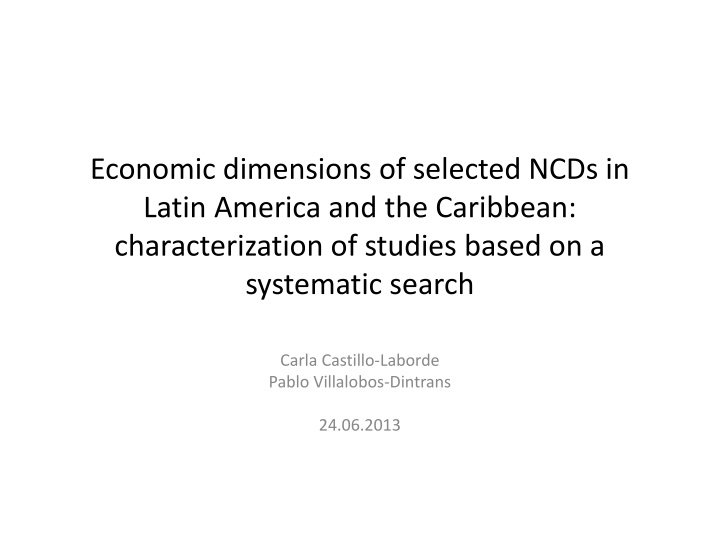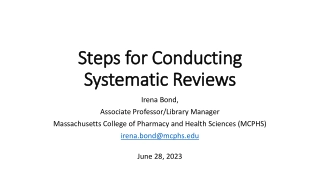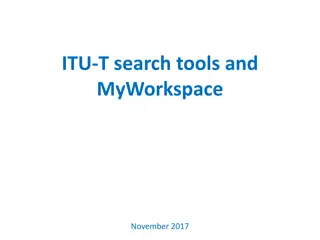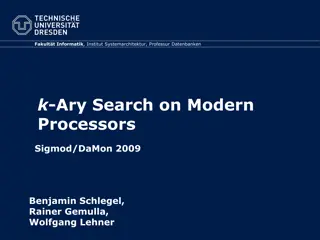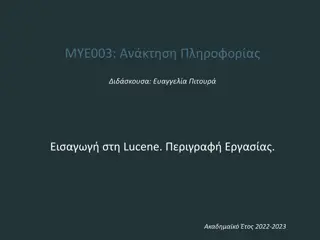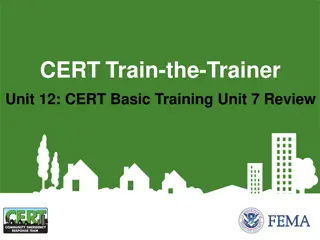systematic search
Importance of non-communicable diseases (NCDs) in the region, economic burden, productivity impact, health system costs, research objectives and methods used in identifying information gaps on NCDs in Latin America and the Caribbean between 2000-2012.
Download Presentation

Please find below an Image/Link to download the presentation.
The content on the website is provided AS IS for your information and personal use only. It may not be sold, licensed, or shared on other websites without obtaining consent from the author.If you encounter any issues during the download, it is possible that the publisher has removed the file from their server.
You are allowed to download the files provided on this website for personal or commercial use, subject to the condition that they are used lawfully. All files are the property of their respective owners.
The content on the website is provided AS IS for your information and personal use only. It may not be sold, licensed, or shared on other websites without obtaining consent from the author.
E N D
Presentation Transcript
Economic dimensions of selected NCDs in Latin America and the Caribbean: characterization of studies based on a systematic search Carla Castillo-Laborde Pablo Villalobos-Dintrans 24.06.2013
Background The importance of NCDs Demographic and epidemiological transition Life style and risk factors High prevalence High burden of disease (worldwide) 2004: 48% of total DALY (WHO, 2008) 2010: 54% of total DALY (Murray et al., 2012) 11,8% cardiovascular and circulatory 7,6% cancer CDs 7% in countries with advanced demographic and epidemiological transition 67-71% Sub Saharan Africa
Background High economic burden Productivity Working days lost Premature death Health system Direct costs Health expenditure Financial coverage Cost effectiveness Individuals Out-of-pocket spending
Objective The contributing to identify information gaps on the economic dimensions associated to NCDs in Latin America and the Caribbean during the period 2000-2012. main objective of this research is
Methods A systematic search of articles available at the Virtual Library in Health (BVS) was conducted (10.12.2012). The review of articles considered the following criteria (previously established): Period 2000-2012 Focus on Latin America and the Caribbean Economic studies Prioritized NCDs Cancer Diabetes Cardiovascular diseases Respiratory diseases Risk factors
Methods The final selection and review included articles regarding: Costs Economic impact (mainly macro) Economic evaluations Socioeconomic analysis on the four prioritized NCDs (cancer, respiratory diseases, cardiovascular diseases, and diabetes) and their risk factors. The selected articles were characterized considering the country under analysis, year of publication, type of NCD, specific disease under analysis and type of study among others.
Results: selection Original search: 2,678 Repeated articles: 2,246 (433 eliminated) Titles review: 456 (1,790 eliminated) Abstracts review: 285 (170 eliminated) *LAC, Economics, NCDs
Results: by country N studies by country Uruguay 1 Panam 1 Jamaica 1 El Salvador 1 Ecuador 1 Trinidad y Tobago 2 Rep blica Dominicana 2 Cuba 2 Costa Rica 2 Global 3 Honduras 3 Barbados 3 N studies Puerto Rico 4 Nicaragua 4 Guatemala 4 Venezuela 7 LAC 8 Per 13 Chile 16 Colombia 26 Argentina 26 M xico 57 Brasil 114 0 20 40 60 80 100 120
Results: by NCDs N studies by NCDs NCDs (general) 11 Respiratory diseases 40 Diabetes 47 N studies Cardiovascular diseases 48 Risk factors 49 Cancer 106 0 20 40 60 80 100 120
Results: by economic study N studies by type of economic study Other 5 Economic impact 29 Costs 77 N studies Socioeconomic 89 Economic evaluation 89 0 10 20 30 40 50 60 70 80 90 100
Results: by year of publication N studies by year of publication 40 37 35 34 35 33 29 30 24 24 25 20 N studies 17 16 15 12 11 10 8 5 5 0 2000 2001 2002 2003 2004 2005 2006 2007 2008 2009 2010 2011 2012
Results: affiliation Some of the most frequently mentioned institutions: Fundaci n Osvaldo Cruz, Brasil Hospital Italiano, Buenos Aires, Argentina Instituto Mexicano del Seguro Social (IMSS), M xico Instituto Nacional de Salud P blica, Cuernavaca, M xico Instituto de Efectividad Cl nica y Sanitaria (IECS), Argentina Secretaria de Salud, M xico Universidad de Chile, Chile Universidad de Puerto Rico, Puerto Rico Universidade de Saao Paulo, Brasil Universidade Federal do Rio Grande do Sul, Brasil Universidade Federal do Sao Paulo, Brasil Universidad Nacional de Colombia, Colombia University of the West Indies, Jamaica *Some institutions from non LAC countries were identified, for instance: Harvard University, John Hopkins University, LSHTM
Results: funding Most frequently: Councils of Science and Technology (CNPq in Brasil, CONACyT in Mexico, Colciencias in Colombia); Ministries and Departments pharmaceutical industry. of Health; the
Results: economic study and NCDs Otros incluye: Aspergilosis invasora en pacientes oncol gicos pedi tricos, carcinoma hepatocelular, enfermedad sea metast sica, es fago, faringe, laringe, mieloma m ltiple, neutropenia febril, pr stata, tumores y ves cula.
Results: economic study and cancer *Others include: invasive aspergilosis in pediatric oncology patients, hepatocellular carcinoma, metastatic bone disease, esophageal, pharyngeal, laryngeal, multiple myeloma, febrile neutropenia, prostatic, tumors and gallbladder.
Results: economic study an respiratory diseases *Others include: severe chronic hypoxemic, lung hidatidosis, rhinosinusitis, rhinitis, respiratotory disease in general.
Results: economic study and cardiovascular disease *Others include: cardiovascular diseases in general, high cardiovascular risk, mediastinitis, ostium secundum atrial septal defects, coronary artery disease, prevention, coronary lesions, risk for sudden death, supraventricular tachycardia, valvular heart disease.
Discussion The study represents a general overview regarding the economic research on NCDs in Latin America and the Caribbean What has been studied? How? When? Where? There is a growing trend in the number of studies since the year 2000, more than tripling the number of publications between 2000 and 2012. Most of the studies are based on Brazil, Mexico, Colombia and Argentina. Among the reviewed articles, the most studied NCD was cancer, specifically cervical and breast cancer. One condition that also presented a high number of studies was asthma, as well as the risk factors like tobacco consume and obesity and/or nutritional status. About 90% of the studies use a cost (30%), economic gradient (30%), and economic evaluation approach. The remaining 10% correspond to analyses using an economic impact framework.
Discussion Is it enough? Despite the importance of NCDs in terms of their sanitary and economic burden, it seems that the number of related studies in LAC is still limited and highly concentrated in four countries. What about the other countries? Is it possible to transfer results? What other information do we need in order to properly inform health decisions and planning at the regional and national level? In order to support the decision making process in the health policy area it urges to promote these kind of studies in the region. It is required a structured planning on the research conducted in this area, in order to close the existing information gaps (in terms of the countries and the diseases analyzed, and in terms of the methodological approaches). The Pan-American Health Organization, as the coordinator of the health policies in the region, plays a key role in this endeavor. Limitations Mental and behavioral disorders not included Just BVS indexed publications International organizations Other greyliterature Systematic review (methodologies and results)
